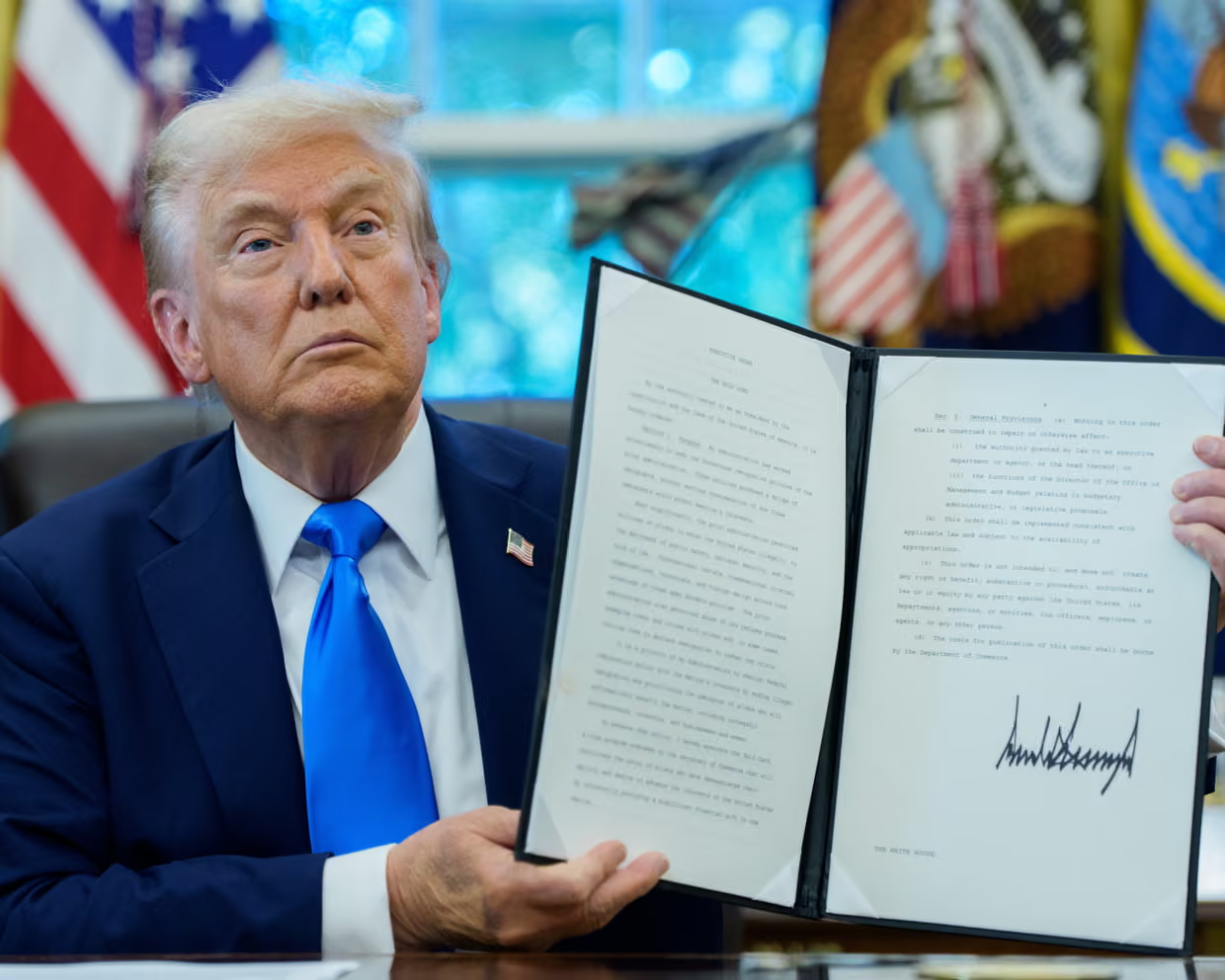WASHINGTON, D.C. – In a major and controversial overhaul of U.S. immigration policy, President Donald Trump has signed a proclamation imposing an annual $100,000 fee for H-1B visa applications. The new policy, which takes effect on September 21, 2025, is a significant departure from the current fee structure and is set to dramatically reshape the landscape for skilled foreign workers, particularly in the tech sector.
The proclamation, signed on Friday, applies to both new H-1B visa applicants and renewals, and it must be paid by the employer. According to White House officials, the steep increase is intended to curb what the administration views as the misuse of the visa program and to protect American jobs. Commerce Secretary Howard Lutnick stated that the fee is designed to be “non-economic” for companies that hire lower-wage foreign workers and will encourage them to “train Americans” instead.
The move has been met with mixed reactions. Supporters argue that the change will ensure that only the most highly skilled and essential workers are brought into the country, raising wage levels and discouraging companies from using the visa as a source of cheap labor. Critics, however, are raising concerns about the legality of the proclamation, arguing that the executive branch does not have the authority to impose such a fee without congressional legislation. Immigration experts have warned that the high cost could effectively end the H-1B program for many industries and could push companies to move jobs overseas.
The policy is expected to have a particularly significant impact on Indian IT companies, as Indian nationals are the largest group of H-1B visa holders. Major tech firms that rely heavily on the program, such as Amazon, Microsoft, and Google, will also face a substantial increase in their operational costs. The new fee is part of a broader set of immigration changes, which also includes the introduction of “Gold Card” visas for wealthy individuals who invest in the U.S.
Conclusion
The new H-1B visa fee marks one of the most consequential shifts in U.S. employment immigration policy in years. While the administration claims the move will benefit American workers, it faces near-certain legal challenges and is set to create significant barriers for companies and skilled professionals alike. Its ultimate impact on the U.S. economy and global talent pool remains to be seen.
Affiliate Disclosure
This news article does not contain affiliate links.
Disclaimer
The information provided is based on public announcements from the U.S. administration and reputable news reports. The details of the policy, including its legal validity and implementation, are subject to change and potential legal challenges. This article is for informational purposes only and is not legal or professional advice.
Official Authentication Links
For the most accurate and up-to-date information, please refer to official U.S. government sources:
- The White House (Office of the Press Secretary): https://www.whitehouse.gov/briefing-room/statements-releases/
- U.S. Citizenship and Immigration Services (USCIS) Policy Alerts: https://www.uscis.gov/policy-manual/alerts
- U.S. Department of State, Bureau of Consular Affairs: https://travel.state.gov/content/travel/en/news.html







